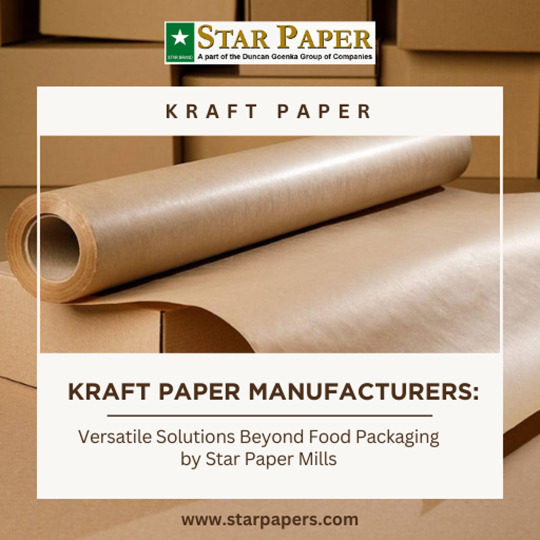#clonal
Explore tagged Tumblr posts
Photo

(via 柴犬まなち on X: "むしられたわん(´・ω・) https://t.co/SuazkQjszG" / X)
72 notes
·
View notes
Note
i have seen old tjikko - a clonal tree that's the most recent of several genetically identical trees that have been growing in the same spot for nearly 10 000 years. it likely sprouted for the first time very shortly after the ice receded from that part of sweden.
unh I love her

20 notes
·
View notes
Text
Tell me… what do you know of the glorious pawpaw?



Shot on a Canon AE-1 program and 50 mm lens. I believe its kodak ultramax 400
#i fucking love pawpaws ripping into the succulent fruit and its clonal!#appalachian mountains#appalachia#native plants#film photography#35mm#kodak ultramax 400
4 notes
·
View notes
Text
wow t cell clonal expansion is just like multi shadow clone jutsu for real
0 notes
Text
"Bloody" aging stems from methylome: and DNMT 3s the energy out of the mitochondria
As we age blood stem cells, the essential source of new blood cells in the body, can accumulate genetic mutations. These mutations can give the cells a growth advantage, laying the foundation for developing serious health conditions. Now, scientists at The Jackson Laboratory have not only discovered the mechanism that fuels their unchecked growth but have also found a way to stop it. Led by…
#bone marrow#cellular aging#cellular energy#clonal hematopoiesis#DNA methylation#gene expression#inflammation#metformin#mitochondria#self-renewal#stem cells
0 notes
Text
youtube
#Cancer genomics#tumor mutational burden#genomic instability#precision oncology#somatic mutations#germline variants#next-generation sequencing (NGS)#oncogenic drivers#tumor suppressor genes#DNA methylation#transcriptomic profiling#epigenetic alterations#gene expression signatures#liquid biopsy#multi-omics analysis#genomic biomarkers#clonal evolution#chromosomal aberrations#pharmacogenomics#personalized cancer therapy.#Youtube
1 note
·
View note
Link
1 note
·
View note
Text
I'm guessing this is what it feels like to be one of the handful of sentient creatures Ents tolerate around Fangorn. You're just some dude living your life in accordance to Tolkien's weird lifespan estimates for Men, and the thing that gives you a placid nod is practically as old as Arda itself.

#lotrblr#tree clonal colonies#pando#I want to find a nice and verdant spot somewhere in Pando and sit down. Just - sit down.
1K notes
·
View notes
Text
Absorbent Kraft Paper Manufacturers: Leading the Way in Quality and Sustainability

Looking for reliable Absorbent Kraft Paper Manufacturers? Look no further than Star Paper Mills! With our dedication to quality and customer satisfaction, you can trust us to provide top-notch paper products every time. Visit here: http://starpapers.com/
0 notes
Photo

福姫 on X: "なんだかスースーするんだわん #大事なもふもふ #取られたわん #柴犬のいる暮らし #柴犬 https://t.co/73irMPfeeJ" / X
76 notes
·
View notes
Text
"Marian Elliot Koshland: Pionera de la Inmunología y los Misterios de los Anticuerpos"

View On WordPress
#Política científica#Legado científico#divulgación científica#Bioquímica#Inmunología#investigación biomédica#Anticuerpos#Marian Elliot Koshland#Selección Clonal#Diversidad de Anticuerpos#Educación en Ciencias#Superación de Barreras de Género
0 notes
Text
I feel like you can succinctly argue against eugenics like so: It isn't actually possible to breed good people, and giving the government the power to try it results in super horrible nightmares for everyone.
Making citizens be good is a lot more complicated than just killing off all the people you don't like and then forcing the ones you do like to have fifteen babies a pop. So like. Let's not do that, okay?
The pseudoscience of eugenics is where much of the cruelty and oppression enshrined under far right religious ideology is reframed in scientific-sounding terms so that it can be sold to atheists, agnostics, and "spiritual, not religious" people. If you belong to one of these groups, you should make a conscious effort to learn about the history of eugenics and eugenicist rhetoric, because you have likely internalized more of it than you realize.
#eugenics: you MIGHT POSSIBLY have a case for trying it if it had ever actually sort of worked even once#BUT IT HASN'T#this is a resolved question you can't breed people like show dogs it doesn't work you just have a lot of traumatized and dead humans#chickens: sure#horses: i guess if you consider the clonal weirdness happening with derby horses optimal#cats: arguably#humans: they don't work like that
1K notes
·
View notes
Text
bwa
#ra speaks#personal#finished my lecture for next week. haven’t practiced it yet but all the research/slides/etc. is done.#still need to write a script(?) for myself. I usually have a strict script I stick to but idk maybe I’ll be a little less formal.#they’re good students and I love this topic AND I think there’s one too many Star Wars prequels memes for it to be too serious#(I work with cryptid clonal invasive insects. the archives are incomplete. just like the simulations. I hate sand (eggs look like sand).#but o7 it’s DONE I can relax (ish) tomorrow. won’t fully relax until the month is over and done but. soon. soon I shall play bibeo gams:]
1 note
·
View note
Text
Things I would want to study in grad school if I had infinite energy and wasn't disabled by my disability, #2018529347248392: I was reading a paper about the role of fungal spores in human illness (esp. asthma) and noticed that the genera of fungi most commonly implicated were also some of the most common pathogens of plant crops and horticultural plants.
In my horticulture class, I am learning a lot about disease in crops, and how monoculture makes crop systems susceptible to disease. Under a monoculture based crop system, some of the most productive agricultural lands are places that receive little natural rainfall. Since moisture allows fungus and other pathogens to grow, it is cheaper to grow crops in a dry region and irrigate them artificially rather than to grow crops in a wet region where rain provides what the crops need, because in a monoculture, there is no diversity and a pathogen that is extremely infectious to one plant will be extremely infectious to every plant in the entire field, creating the worlds most explosive superspreader event.
But even beyond the monoculture crop fields, there is alarming sameness in the intentionally grown plant life of the world---nursery flowers and trees are often clonally propagated and picked out from a few species that are popular...and lawns, the lawns! vast oceans of monoculture grass!
It reminded me of another paper describing how in cities, the diversity of fungal spores is much lower than in the country.
Could plant sameness be affecting our health by affecting the variety of fungus that exists in the ecosystem?
If so...how? Could over-exposure to pathogenic fungi of plant monocultures cause allergic sensitization? Or could the absence of the other fungi associated with more complete plant ecosystems, also affect human health?
533 notes
·
View notes
Text
Optimizing Rooting of White Potato Cuttings: A Study of Three Growth Conditions

Abstract
The need to produce a cheap alternative and farmer level technology in the production of clean planting materials of White Potato (Solanum tuberosum L.) prompted the investigation on the rooting response of clones from stem cuttings of different age and number of nodes under different concentrations of synthetic plant hormone Alpha-Naphthalene Acetic Acid (ANAA). A zero generation (G0) mother plant was used as a source of clones to examine whether it could produce roots in a sterilized medium. In a replicated split-split plot experimental design with three factors such as the age of the mother plant, number of nodes and levels of growth regulator, we found that roots emerged from clones 18 days after planting in a sterilized river sand. Significant effect on rooting was influenced by the age of cuttings (p=0.0058), number of nodes (p=0.0058) and ANAA (p=<0.0001). Moreover, significant interactions were found among age of cuttings, number of nodes and ANAA concentrations on rooting (p=0.0044). Implications for the feasibility of mass producing clean planting materials from cloning G0 mother plant are discussed.

Introduction
White potato (Solanum tuberosum L.) is a perennial crop belonging to the Solanaceae family grown mainly for its tubers (Spooner et al., 2014). First cultivated 8000 years ago by the Peruvian farmers in Peru’s Central Andes; now it has more than 4000 different cultivars grown globally (Niekerk et al., 2016; Lutaladio et al., 2009). It was initially introduced in Europe in the sixteenth century and was subsequently distributed throughout the world. Potatoes are the world’s primary non-grain staple food in several countries in Europe and some parts of America due to its nutrient content; with China, India, Ukraine and Russia as top producers (Lutaladio et al., 2009; Shahbandeh, 2022).
The biggest obstacle of the white potato industry in Asia, particularly Philippines is the source of clean planting materials, because potatoes are attacked by bacterial wilt disease caused by pathogen Ralstonia solanacearum. The conventional method of white potato propagation is through the use of tubers, but the risk is high. Other methods are the use of True Potato Seeds (TPS), and through stem cuttings (Morais et al., 2018; Shiwani et al., 2021). At present, the Department of Agriculture’s Northern Mindanao Agri Crops and Livestock Research Complex (DANMACLRC) uses the tissue culture technology to mass produce seedlings and tubers as the source of potato clean planting materials, but cannot cope up with the current demand; thus there is pressure to explore other methods.
Numerous studies were conducted to explore and enhance the propagation of potato through stem cuttings. The work of Zaki and Moustafa (2018) for example, used Indole Acetic Acid (IAA) and Indole Butyric Acid (IBA) at higher concentrations reaching up to 6000 parts per million (ppm) but rooting responses of potato varieties tested differ significantly. Ezzat (2016) dipped the stem cuttings for 1 minute to various rooting hormones such as Indole-3-butyric acid Potassium salt (K-IBA) at 1000 ppm, IAA at 250, and 1-Naphthaleneacetic acid NAA at 500 mg/L. The same hormone IAA was tested by Nikmatullah et al. (2018), but other factors such as age of mother plant and number of nodes was included.
In this study we explored the responses and interactions at different ages of Granola white potato stem cuttings, number of nodes, and levels of hormones in terms of its rooting ability and growth. Results and its potential for tuber production are discussed.
Source : Optimizing Rooting of White Potato Cuttings: A Study of Three Growth Conditions | InformativeBD
1 note
·
View note
